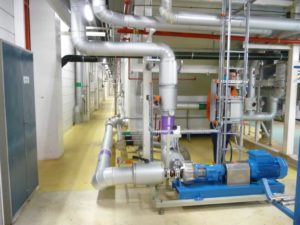North America Will Be Largest Market for Fluid Treatment and Control of Unconventional Fuels
Developments in extracting gas from shale and bitumen from sands are making unconventional fuel sources an attractive alternative to conventional oil and gas.
The production processes to produce fuels from unconventional sources require much larger investments in fluid treatment and control. Conclusions reached by the McIlvaine Company are:
- The unconventional fuels fluid treatment and control market will grow at double digit rates over the next decade
- North America will be the biggest market
- The unconventional fuels fluid treatment and control revenues worldwide will grow from $3.4 billion in 2011 to over $10 billion in 2020
The individual sources and the importance of North America are:
- Gas Shale
The U.S. is leading the way with hydrofracturing to extract very large quantities of gas. However, the fluid treatment and control costs for injection as well as flow back are substantial.
- Coal-Bed Methane
The U.S. is third and Canada is fifth in terms of recoverable reserves. China is the leader with plans to increase production to 40 billion m3 in 2020.
- Heavy Oil
Canada is the world leader with a number of new projects in oil sands. Steam assisted gravity drainage technology requires fluid treatment and control of injection and produced water. Environmental compliance at existing plants is also a driving force.
- Gas-to-Liquids
Plentiful shale gas will lead to an $8 billion investment in gas-to-liquid facilities in the U.S. over the decade. However, the big market will be in the Middle East.
- Coal-to-Liquids
The U.S. is vying with China to lead in this market. A technology advance to use direct liquefaction could accelerate the market.
- Biofuels
The U.S. is already the world leader ahead of Brazil. Some recent technical developments make cellulosic ethanol a potential option.
- LNG
North America is a big market for regasification but not for the liquefaction. Both require fluid treatment and control.
These applications offer a big opportunity for pump suppliers. For example progressive cavity pumps are needed to move the highly contaminated water and oil back to the surface. Expensive pumps are needed to inject water, sand and chemicals at high pressures in fracturing and enhancement processes.
Centrifuges play a big role in processing biofuels. Filtration is the heart of the coal direct liquefaction process. Membranes play a big role in separation of gases e.g. CO2 and in the purification of water and wastewater used with the various technologies.
Stack gas filters and scrubbers are needed in all the processes. They are also needed where solid fuels are used to provide the steam and electricity for the processes. Another use is control of fugitive dust in the movement and storage of the products and the chemicals needed to treat the products.
Lubrication valves, pumps and filters are used with the mining equipment and for the big rotating machinery used in many of the processes.
Source: The McIlvaine Company



